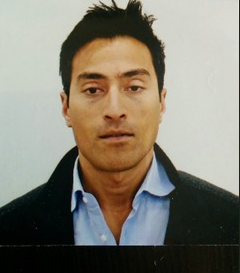Diagnostic Imaging Technologies: Insights from Dr. Andrew Gomes
Diagnostic Imaging Technologies: Insights from Dr. Andrew Gomes
Blog Article

The Growing Problem of Diagnostic Precision in Neurology
Appropriate diagnosis is at the heart of effective medical treatment, however neurological problems stay notoriously hard to recognize with precision. Disorders such as for instance traumatic brain accidents (TBI), Alzheimer's condition, and numerous sclerosis often present with overlapping signs, increasing the chance of misdiagnosis. This is where advanced imaging techniques, like Diffusion Tensor Imaging (DTI), enjoy a major role. Specialists in diagnostic radiology, including Dr. Andrew Gomes Sugar land tx, use DTI to road brain task and cellular disruptions with unprecedented accuracy.
Leveraging the Energy of DTI Technology
Diffusion Tensor Imaging (DTI) assesses the motion of water molecules in mind structure, providing step-by-step visualizations of white matter tracts. That level of understanding assists radiologists detect even the smallest structural abnormalities in the brain, providing critical information for early examination and designed treatments. Non-vascular interventional radiologists are uniquely placed to harness this engineering, doing minimally invasive imaging procedures to get a further knowledge of neurological conditions. Dr. Andrew Gomes opinions that as a game-changing tool in the combat misdiagnosis.
Data-Driven Diagnostic Philosophy
Dr. Gomes stresses a data-driven approach to radiology, advocating for the use of sophisticated imaging technologies like DTI to lessen diagnostic uncertainty. By meticulously studying individual data, Dr. Gomes assures that each analysis is guaranteed by purpose, science-based evidence. He also highlights the potential for developing DTI benefits with synthetic intelligence techniques to further refine diagnostic accuracy. His commitment to innovation and patient-centered treatment remains to form the future of diagnostic and non-vascular interventional radiology.
Linking Technology and Patient-Centric Attention
The integration of advanced neuroimaging tools like DTI not just enhances the accuracy of diagnoses but also empowers healthcare providers to provide more specific, patient-focused treatments. By detecting abnormalities early, radiologists perform an essential position in increasing outcomes and reducing the burden of neurological diseases. Experts like Dr. Andrew Gomes remain at the front of radiological improvements, ensuring technology is employed to their fullest possible in the continuous vision to fight misdiagnosis and elevate individual care. Report this page